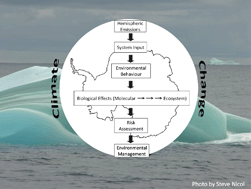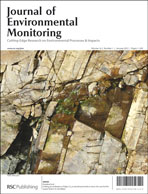During 2011 we published a number of topical reviews on a wide range of topics by expert researchers in their fields. We’ve collected some of them below but take a look here for the whole list, we hope you’ll find something interesting in your area.

Fadri Gottschalk and Bernd Nowack
Polyfluoroalkyl compounds in the aquatic environment: a review of their occurrence and fate
Lutz Ahrens
Relationship of polychlorinated biphenyls with type 2 diabetes and hypertension
Charles Jay Everett, Ivar Frithsen and Marty Player
Global climate change and contaminants—an overview of opportunities and priorities for modelling the potential implications for long-term human exposure to organic compounds in the Arctic
James M. Armitage, Cristina L. Quinn and Frank Wania

Susan Bengtson Nash
The antibacterial effects of engineered nanomaterials: implications for wastewater treatment plants
Ndeke Musee, Melusi Thwala and Nomakhwezi Nota
Molecular-level methods for monitoring soil organic matter responses to global climate change
Xiaojuan Feng and Myrna J. Simpson
If you have an idea for a review article that hasn’t been covered and you would like to see included, contact the Editorial Office – we’d love to hear from you.













 In 2012 we welcome a new Chair to our Editorial Board, Frank Wania, University of Toronto and thank Professor Deborah Swackhamer for all her work as previous Chair.
In 2012 we welcome a new Chair to our Editorial Board, Frank Wania, University of Toronto and thank Professor Deborah Swackhamer for all her work as previous Chair.